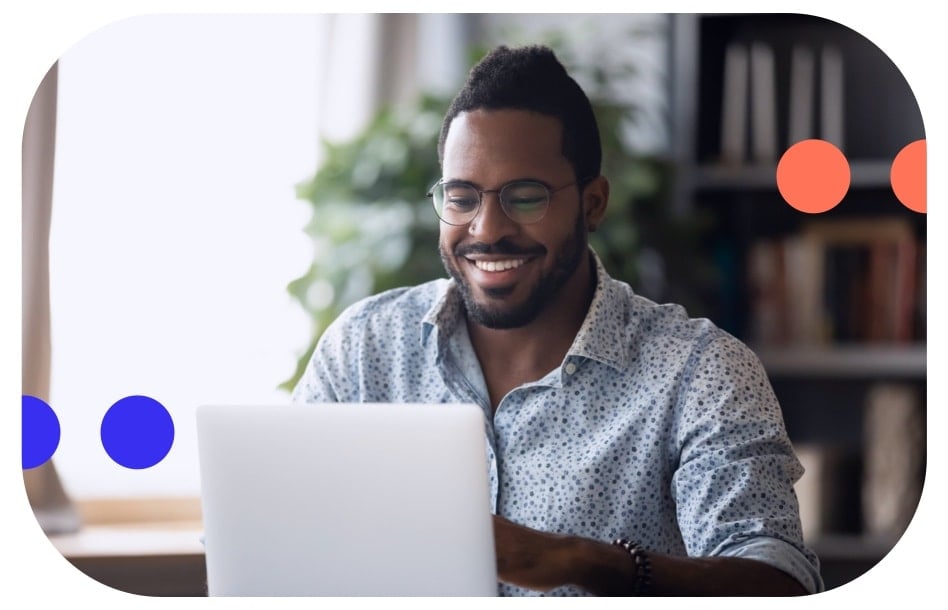Fortinet Acquires Next DLP Strengthens its Top-Tier Unified SASE Solution
Read the release

Data loss prevention (DLP) is essential for businesses of all sizes today. We created this DLP security checklist to help you understand the key steps in improving data loss prevention, including:
Before we discuss these steps in detail, let’s review what data loss prevention is.
Data loss prevention (DLP) is simple in concept but not always in practice. Organizations want to prevent their valuable data from being lost, compromised, or accessed by unauthorized users. The objective is to ensure that no sensitive or confidential data is used inappropriately by external or internal actors.
This sounds like it should be relatively easy to accomplish. In reality, it can be extremely challenging, as multiple processes and activities need to work together to implement an effective DLP solution that helps your business achieve cybersecurity compliance.
A DLP security checklist must address the variety of factors that go into the process. Not all are addressable through software tools, as some will require the input and cooperation of your company’s workforce — including those who work remotely and on-site employees. The following DLP security checklist covers the key steps you must take to achieve better data protection.
The first step in implementing a DLP security strategy is to define where it fits within your company’s existing security policies and controls. Consider any applicable regulatory requirements and security standards, such as:
After identifying and understanding any regulatory requirements that apply to your business and how your DLP strategy fits within those existing policies and controls, the next step is to define the scope of your data loss prevention plan.
This should include defining success metrics, such as False Positive rates (false positive rates, or identification of threats that aren’t truly threats), training interventions, and detection accuracy. It should also include endpoints and networks, cloud applications, and chat or messaging solutions.
At this stage, you’ll want to consider your business requirements. That means recognizing the business processes that your DLP solution must facilitate and secure, such as transferring customer payment data to a finance contractor or sharing protected health information (PHI) with other healthcare providers or insurers.
In addition to your business requirements, you should also take your technical requirements into account. For instance, you’ll want to consider compatibility with endpoints and the performance of your DLP solution on endpoints.
You should also consider the overhead required for building and maintaining rules, as well as bandwidth and storage requirements. Additionally, if your company has a remote workforce, you’ll require off-network performance from your DLP solution.
Now that you’ve identified your business and technical requirements, it’s time to determine what types of data you need to protect. This should include internal data such as personally identifiable information (PII), PHI, payment card information, customer data, financial data, and your company’s trade secrets and other intellectual property (IP).
Your IP may include source code, blueprints, wireframes and prototypes, design documents, formulas, proprietary processes, strategic planning data, and even databases, among other confidential information.
After determining what data you need to protect, you must develop a data identification and classification system. This includes processes for identifying structured data sources like databases, unstructured data sources such as text documents, presentations, chat conversations, video, and images, and semi-structured data sources such as emails and spreadsheets.
You’ll need a system that recognizes sensitive data. Some common identification options include:
These parameters are used to identify and differentiate low-risk data, moderate-risk data, and high-risk data.
After developing a data identification and classification system, the next step is to define your security requirements and policies. Your company needs a data handling policy that aligns with its business requirements and objectives, and any applicable industry regulations, which you’ve identified in previous steps.
Your policies determine the risk involved when handling different types of data, define how data elements should be protected, identify security controls and escalations, and identify user training to prevent or stop accidental or negligent leaks, and encryption requirements for different classes of data.
For instance, a data handling policy may call for all high-risk data to be encrypted at all times. Less sensitive data can be transferred without encryption, saving resources that are not necessary to protect the information. A data handling policy needs to balance data sensitivity with the processes required to protect it. Use our DLP policy testing tool to assess the effectiveness of your DLP policies.
Determining roles and responsibilities is an important step when implementing a data loss prevention solution. You’ll want to consider who is responsible for rule creation, who is responsible for rule enforcement, and how exceptions should be handled (and who is responsible for doing so).
Data loss prevention cannot be fully successful without the cooperation of an organization’s employees. Distribute your DLP policies and require employees to review them and educate employees on cyber hygiene principles. Additionally, inform employees of what devices and applications are sanctioned and unsanctioned.
Employee training and education show end users how to handle data appropriately without taking unnecessary risks. The accidental disclosure of sensitive data is less likely with an educated workforce.
Once your employees are informed on your DLP policies and provided education and training on how they can help to keep sensitive data secure, you’ll still want to keep an eye on poor cyber hygiene practices so that you can continue to educate employees and enforce rules and policies.
A DLP software solution should be capable of monitoring data flows to ensure that data handling policies are being followed. In cases where they are not, the DLP solution should take the appropriate actions to protect the information. This may take the form of automatically encrypting unencrypted high-risk data, clearing the Windows clipboard when sensitive data is copied from an unauthorized application, or alerting the security team to potentially risky user behavior.
Providing incident-based training is also a valuable method for identifying and remediating unsafe practices. This can include controls such as warning employees attempting an unsafe action, blocking the action altogether, and informing the employee of (and requiring them to acknowledge) the relevant policy.
It’s time to roll out and enforce your DLP strategy. First, prepare and test an incident response plan. Enforcement includes methods such as blocking unsafe actions, isolating devices from the network, locking users out of sessions due to risky activity, taking screenshots, displaying messages, blocking uploads, and killing processes.
The Reveal Platform by Next, a comprehensive DLP solution, addresses the needs of modern businesses with cloud and hybrid computing environments. The platform discovers risks to enterprise data, enforces data handling policies, and educates employees with incident-based training.
Reveal is designed to meet the needs of a hybrid-remote workforce and provides the full range of its functionality regardless of an employee’s location or network status. The software continues to collect information and enforce policies even if an employee in a remote location has disconnected from the network.
Reveal is a fully scalable solution that can provide DLP for companies of any size. It’s the first DLP agent to deliver machine learning on the endpoint, identifying and classifying data at the point of risk. These non-intrusive, system-aware, and self-auditing agents run on Windows, macOS, and Linux machines and can detect policy infringements and automatically take corrective actions.
Contact Next DLP and learn how your company can implement enhanced data loss prevention and gain increased visibility into your data resources with Reveal.
Your organization’s data is among its most valuable assets, and cybersecurity threats abound. This DLP security checklist covers the key steps in securing your data, from developing a data handling policy and conducting a thorough inventory, to implementing a data classification solution and a DLP software solution, to promoting employee cybersecurity awareness to enhance your company’s cybersecurity culture. Download our interactive DLP checklist and start implementing a robust DLP strategy today.
Data Loss Prevention (DLP) is a method of providing security to an IT environment by detecting and preventing the misuse of an organization’s sensitive data assets. DLP helps prevent data loss or exfiltration caused by threat actors gaining unauthorized access to a company’s IT resources.
A DLP solution also protects an organization from data leaks initiated by deliberate or unintentional misuse of sensitive information. A business can develop a data handling policy defining rules related to who can access certain information and the acceptable uses of this data.
A DLP tool can automatically enforce the data handling policy, eliminating the possibility that data will be misused by malicious or misguided insiders.
Three different types of DLP solutions are available to address specific parts of an IT environment.
Companies should implement comprehensive DLP solutions that safeguard all components of their IT environment. The complex infrastructures favored by many organizations require network, endpoint, and cloud DLP capabilities to ensure sensitive data is not misused.
Data Loss Prevention (DLP) and Endpoint Detection and Response (EDR) are designed to address different aspects of IT security.
Organizations should consider implementing both EDR and DLP solutions to protect themselves from sophisticated threat actors.

Blog

Blog

Blog

Blog

Resources

Resources

Resources

Resources
